#harrison schmitt
Text
If [Neanderthals'] vision was perhaps more acute and their hearing just as sensitive to voices carried on the breeze, what was their experience of smell? In 2015 a perfume called 'Neandertal' was released, claiming to be inspired by the 'hot flint aroma' produced from making stone tools. Remarkably, this isn't just sales-speak: knapping flints does produce a distinctive scent. It's often compared to a fired gun, and is exactly how astronauts described the smell of moon dust. Around half of the talcum-fine lunar surface is asteroid-pulverized silica: the main ingredient in flint, quartz, and other commonly knapped rocks. Strange to think that moon-tang would have been more familiar to a Neanderthal than to Neil Armstrong.
Dr. Rebecca Wragg Sykes (Kindred: Neanderthal Life, Love, Death, and Art, page 61)

"Apollo 17 astronaut Harrison Schmitt retrieves lunar samples during his December 1972 mission, his spacesuit dirtied by clinging lunar dust. (Image credit: NASA)"
5 notes
·
View notes
Photo

Harrison Schmitt and the rover at Shorty Crater
Panorama created by Andy Saunders
#apollo 17#nasa#moon#space#the moon#apollo#moon landings#lunar rover#harrison schmitt#panorama#crater#landscape#moonscape
26 notes
·
View notes
Text
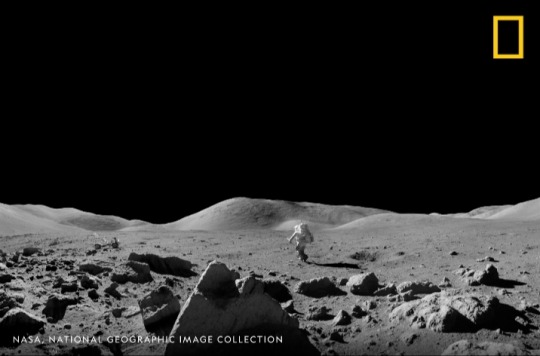
Happy #NationalMoonDay!
In this image from our archives, astronaut Harrison Schmitt (born 3 July 1935) bounds toward the lunar rover during the Apollo 17 mission in December 1972, the last time humans set foot on the moon.
20 July 2023
#National Moon Day#Harrison Schmitt#Apollo 17#lunar rover#moon landing#space mission#space exploration#space#NASA#Nat Geo#Apollo program#Apollo#astronaut
2 notes
·
View notes
Text

Apollo 17 | Harrison Schmitt inside the command module
7 notes
·
View notes
Text

TIL Apollo 17 astronaut Harrison Schmitt was allergic to moon dust.
BigfootDynamite, NASA
0 notes
Text

It's December 7th, 📸 Blue Marble Day. On this day in 1972, on their way from the Earth to the Moon, one of the Apollo 17 crew members shot an image of Earth that has turned out to be one of the most reproduced images in history. NASA credited the image to the entire crew – Gene Cernan, Ronald Evans, and Harrison Schmitt – but evidence suggests that Schmitt snapped the photo.
The astronauts had the Sun behind them, so the image shows the Earth almost fully illuminated. To the astronauts, the Earth had the appearance and size of a glass marble – hence the name. The Blue Marble shows the Earth from the Mediterranean Sea to Antarctica. Almost the entire coastline of Africa is clearly visible, as well as the Arabian Peninsula and Madagascar. The Asian mainland is on the horizon. The Tamil Nadu cyclone can be seen in the bottom left of the image. This storm had brought flooding and high winds to the Indian state of Tamil Nadu two days earlier.
The Blue Marble wasn't the first clear image taken of an illuminated face of the Earth – similar satellite images had already been created as early as 1967. The Apollo 17 image, however, was released during a surge of environmental activism during the 1970s and became a symbol of the environmental movement – a depiction of Earth's frailty, vulnerability, and isolation amidst the vast expanse of space.
The idea for the photo was conceived by Stewart Brand, editor of the Whole Earth Catalog, during an LSD trip. His psychedelic hallucination of the curvature of the Earth convinced him that a picture of the entire planet would change how mankind related to it, and he successfully lobbied NASA to do it. We are all forever grateful, Mr. Brand and Mr. Schmitt. ☮️ Peace… Jamiese of Pixoplanet
#Jamiese#Pixoplanet#Blue Marble#NASA#Earth#Globe#Apollo 17#The Blue Marble#Harrison Schmitt#Gene Cernan#Ronald Evans#Mediterranean#Antarctica#Madagascar#Africa#Asia#Satellite Imagery#Environmentalism#Environmental Activism#Whole Earth Catalog#LSD#Stewart Brand#From The Earth To The Moon#Moon#marble#blue#pic of the day#space#photography#amazing
1 note
·
View note
Text
Astronauta da Apolo 17 não conseguiu esconder sua surpresa quando viu OVNI
Astronauta da Apolo 17 não conseguiu esconder sua surpresa quando viu OVNI
A Apolo 17 (7 a 19 de dezembro de 1972) foi a missão final do programa Apolo da NASA, a última vez que os humanos pisaram na Lua ou viajaram além da órbita baixa da Terra. O Comandante Gene Cernan e o Piloto do Módulo Lunar Harrison Schmitt caminharam na Lua, enquanto o Piloto do Módulo de Comando Ronald Evans orbitava acima.
Seria este um OVNI na Lua, ou somente um acidente com a…

View On WordPress
0 notes
Text
50 Years Ago: Apollo 17
Not long after midnight on Dec. 7, 1972, the last crewed mission to the Moon, Apollo 17, lifted off with three astronauts: Eugene Cernan, Harrison Schmitt, and Ronald Evans.
Experience the Apollo 17 launch and follow the mission in real time.
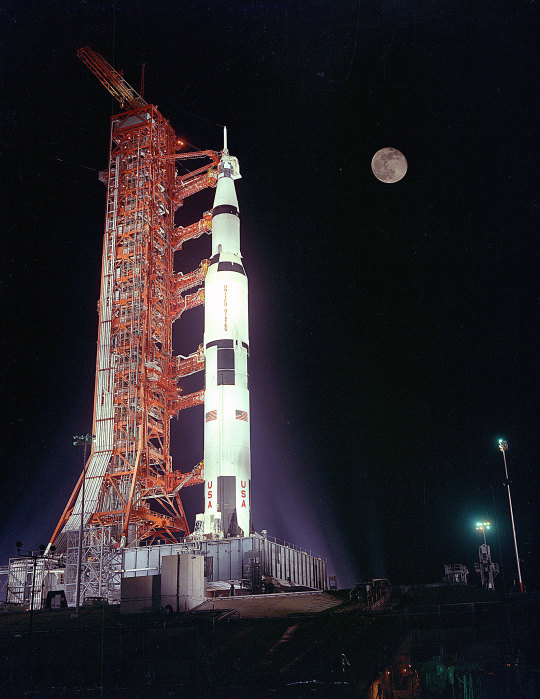
Meet the Crew
Let’s meet the astronauts who made the final Apollo trip to the Moon, including the first scientist-astronaut.
Gene Cernan: In 1972, Apollo 17 Mission Commander Eugene A. Cernan had two space flights under his belt, Gemini 9 in June 1966, and Apollo 10 in May 1969. He was a naval aviator, electrical and aeronautical engineer and fighter pilot.
Ron Evans: Apollo 17 Command Module Pilot Ronald E. Evans was selected as a member of the 4th group of NASA astronauts in 1966. Like Cernan, he was an electrical and aeronautical engineer, and naval aviator before his assignment to the Apollo 17 crew.
Harrison (Jack) Schmitt: Lunar Module Pilot Dr. Harrison (Jack) Schmitt joined NASA as a member of the first group of scientist-astronauts in 1965. Before working for NASA, Schmitt was a geologist at the USGS Astrogeology Center. He was on the backup crew for Apollo 15 before being selected for the prime crew of Apollo 17. He became the first of the scientist-astronauts to go to space and the 12th human to walk on the Moon.
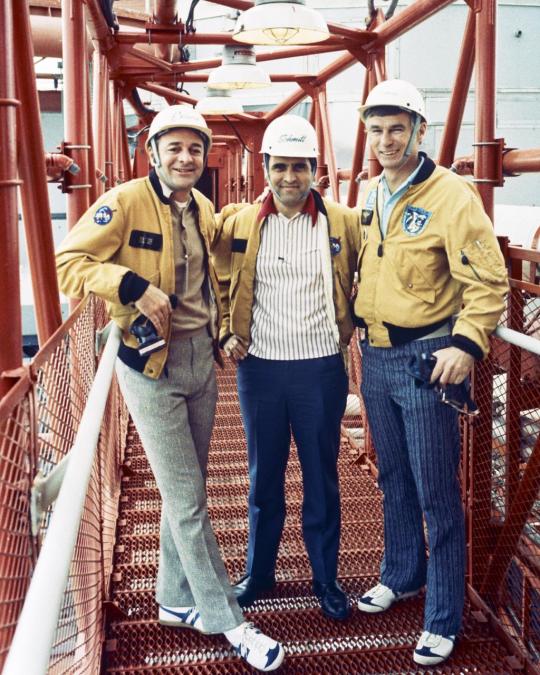
The Blue Marble
“The Blue Marble,” one of the most reproduced images in history, was taken 50 years ago on Dec. 7, 1972 by the Apollo 17 crew as they made their way to the Moon.
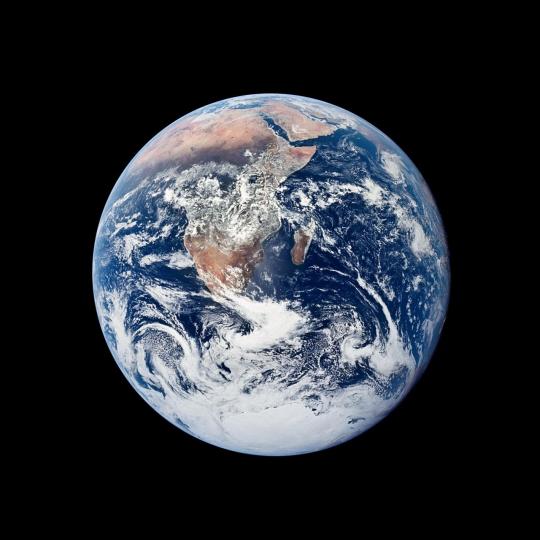
Bag of Soup, Anyone?
NASA astronauts have an array of menu items to stay well fed and hydrated on missions. For Apollo 17, the menus allocated around 2,500 calories per day for each astronaut. They included:
Bacon Squares
Peanut Butter Sandwiches
Frankfurters
Lobster Bisque
Like anything going to space, weight and containment matter. That's why the Apollo 17 menu included plenty of soups and puddings.
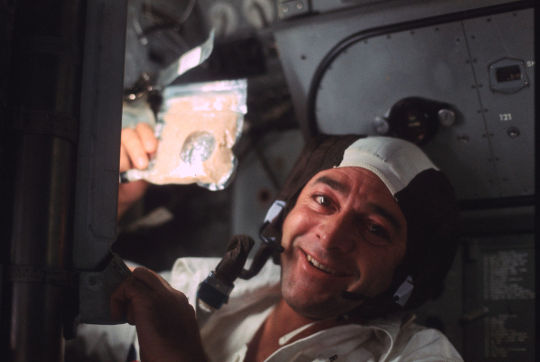
Synchronicity
On Dec. 11, 2022, the Artemis I mission will be splashing down on Earth after its 25.5-day mission. At 2:55 p.m. 50 years prior, the Apollo 17 lunar module (LM) landed on the Moon, with Commander Gene Cernan and LM Pilot Harrison Schmitt on board. Ron Evans remained in the Command and Service Module (CSM) orbiting the Moon.
Experience the landing.
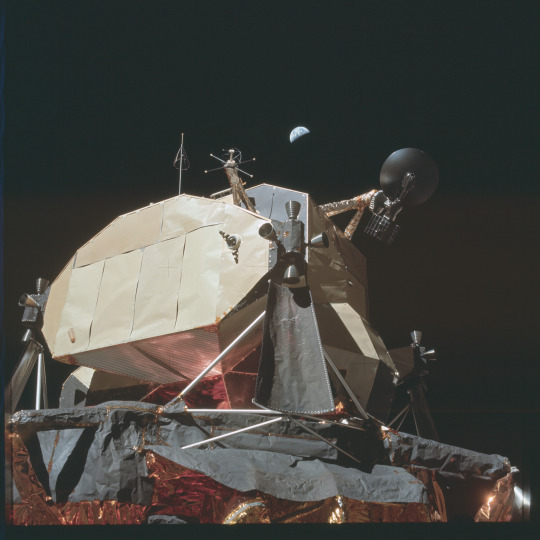
Planting the Flag
One of the first tasks the Apollo 17 crew did on their first moonwalk was to plant the American flag. There’s no wind on the Moon, but that doesn’t mean the flag has to droop. Did you know that a horizontal rod with a latch makes the flag appear to be flying in the wind? Gene Cernan carefully composed this photo to get Schmitt, the flag, and the Earth in a single shot.
So, is the flag still there? Images of the Apollo 17 landing site from the Lunar Reconnaissance Orbiter Camera show that in 2011 the flag was still standing and casting a shadow!
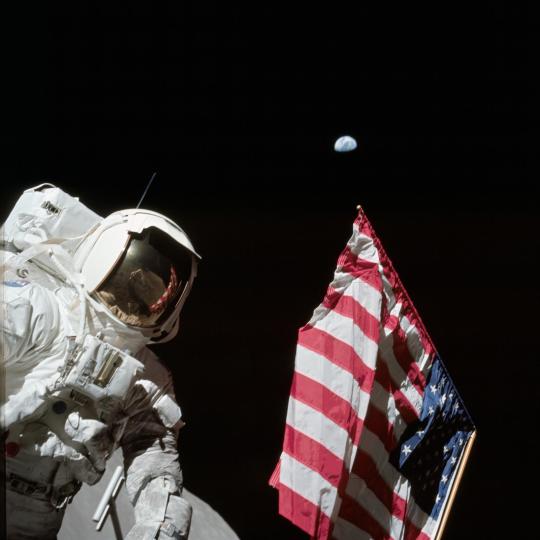
Moon Buggy
During Apollo 17, the Lunar Rover Vehicle (LRV), nicknamed the Moon buggy, logged the farthest distance from the Lunar Module of any Apollo mission, about 4.7 miles (7.5 km).
As a precaution, the LRV had a walk-back limit in the event of an issue; astronauts had to have enough resources to walk back to the lunar module if need be.
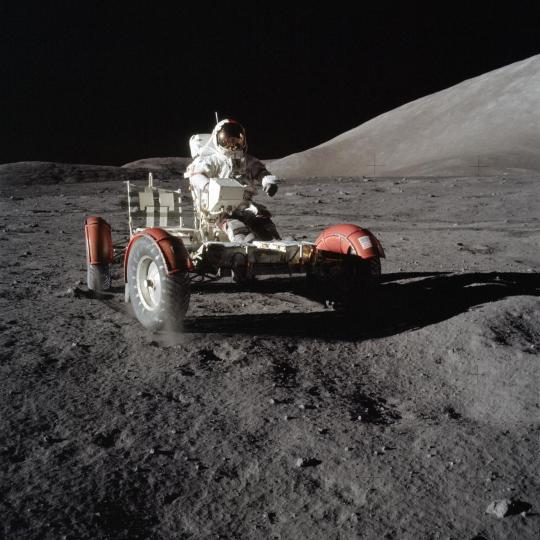
Grab the Duct Tape!
The right rear fender extension of the LRV (Moon buggy) was torn off, kicking up dust as the crew drove, reducing visibility. The crew made a resourceful repair using duct tape and maps.
For LRV fans, visiting an LRV driven on the Moon is a bit difficult since all three LRVs used on the Apollo 15, 16, and 17 missions were left on the Moon. But you can find an LRV used for training at the National Air and Space Museum in Washington.
Read more about the LRV.

The Perils of Lunar Dust
After the first lunar EVA, Apollo 17 astronaut Harrison Schmitt reported that he suffered from “lunar hay fever” in reaction to the lunar dust. Unlike Earth’s dust particles which are rounded, Moon dust particles are sharp and abrasive, irritating astronaut eyes, nasal passages, and lungs.
Curious about how Moon dust feels and smells? Find out!

So What’s it Like?
After his return to Earth, Apollo 17 astronaut Harrison Schmitt (on the right) described his time on the Moon:
“Working on the Moon is a lot of fun. It’s like walking around on a giant trampoline all the time and you’re just as strong as you were here on Earth, but you don’t weigh as much.”

Splashdown!
After 12 days and 14 hours in space, the Apollo 17 astronauts splashed down in the Pacific Ocean at 2:25 p.m. EST on Dec. 19, 1972. It was the longest of all the Apollo missions, with the most photos taken. A recovery team was waiting on the USS Ticonderoga just 4 miles (6.4 km) away to pick up the astronauts, the lunar samples, and the Crew Module.
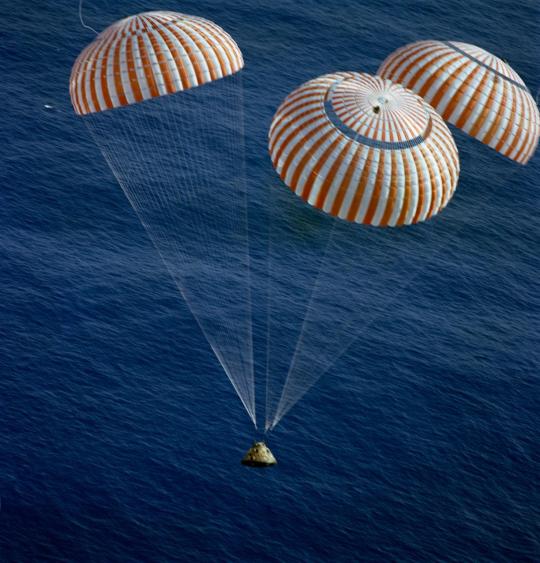
When Are We Going Back?
NASA’s Artemis Program has taken its first steps to sending humans back to the Moon with Artemis I, currently on its way back to Earth. The program plans to land humans, including the first women and person of color, on the Moon’s south polar region with its Artemis III mission, currently slated to launch in 2025.
Is aerospace history your cup of tea? Be sure to check out more from NASA’s past missions at www.nasa.gov/history.
Make sure to follow us on Tumblr for your regular dose of space!
2K notes
·
View notes
Text
Night Launch of Apollo 17
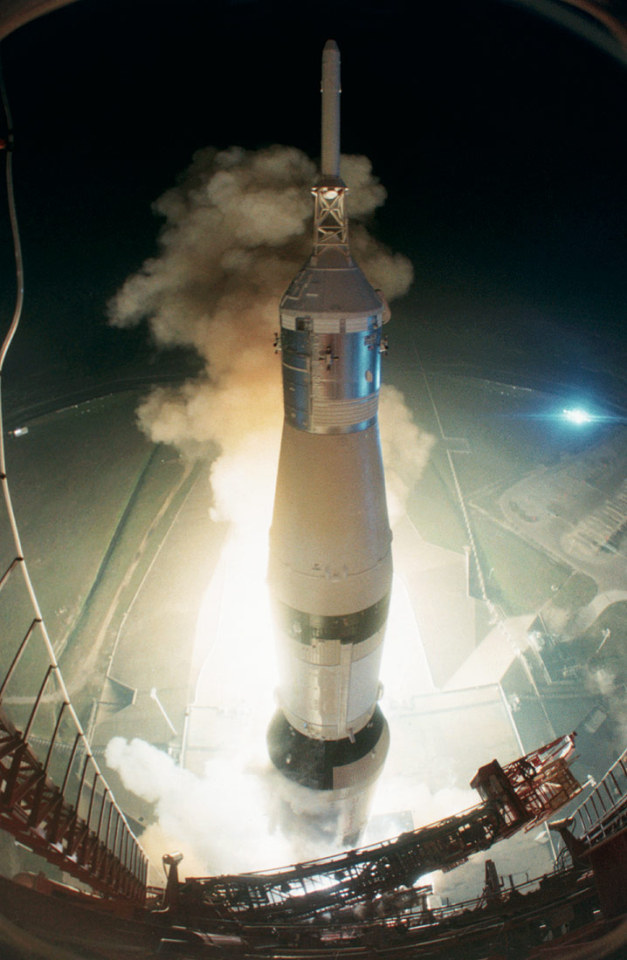


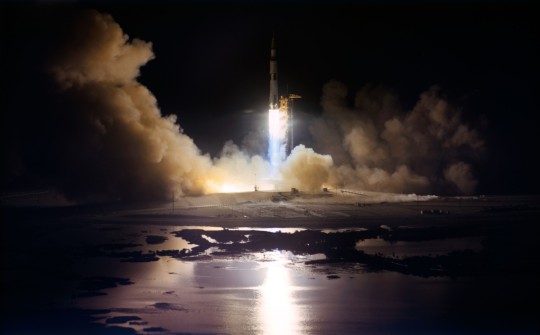
"The huge, 363-feet tall Apollo 17 (Spacecraft 114/Lunar Module 12/Saturn 512) space vehicle is launched from Pad A., Launch Complex 39, Kennedy Space Center (KSC), Florida, at 12:33 a.m. (EST), Dec. 7, 1972. Apollo 17, the final lunar landing mission in NASA's Apollo program, was the first nighttime liftoff of the Saturn V launch vehicle. Aboard the Apollo 17 spacecraft were astronaut Eugene A. Cernan, commander; astronaut Ronald E. Evans, command module pilot; and scientist-astronaut Harrison H. Schmitt, lunar module pilot. Flame from the five F-1 engines of the Apollo/Saturn first (S-1C) stage illuminates the nighttime scene. A two-hour and 40-minute hold delayed the Apollo 17 launching."
Date: December 7, 1972
NASA ID: link, 72-HC-886, S72-55482, S72-55070
#Apollo 17#CSM-114#America#LM-12#Challenger#SA-512#Saturn V#Rocket#NASA#Apollo Program#J-type mission#LC-39A#Kennedy Space Center#Florida#December#1972#my post#launch
150 notes
·
View notes
Text
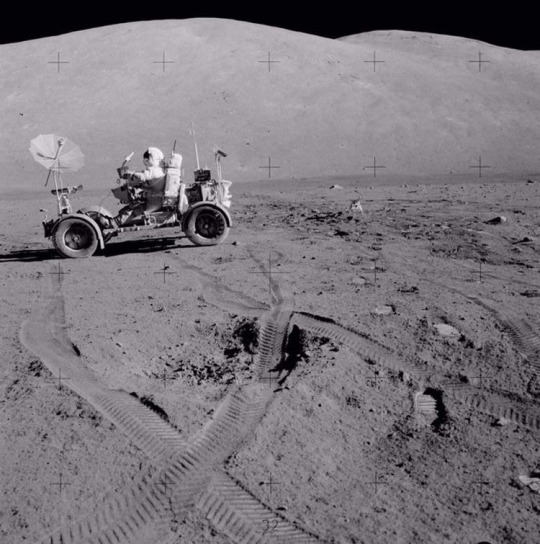
Apollo 17 astronauts (Gene Cernan or Harrison Schmitt) sits in the Lunar Rover during their near 23 hours of EVA time on Apollo Program’s last moon landing, Dec 1972
250 notes
·
View notes
Photo

2024 January 17
America and the Sea of Serenity
Image Credit & Copyright: Gene Cernan, Apollo 17, NASA; Anaglyph by Patrick Vantuyne
Explanation: Get out your red/blue glasses and check out this stereo view of another world. The scene was recorded by Apollo 17 mission commander Eugene Cernan on December 11, 1972, one orbit before descending to land on the Moon. The stereo anaglyph was assembled from two photographs (AS17-147-22465, AS17-147-22466) captured from his vantage point on board the Lunar Module Challenger as he and Dr. Harrison Schmitt flew over Apollo 17's landing site in the Taurus-Littrow Valley. The broad, sunlit face of the mountain dubbed South Massif rises near the center of the frame, above the dark floor of Taurus-Littrow to its left. Piloted by Ron Evans, the Command Module America is visible in orbit in the foreground against the South Massif's peak. Beyond the mountains, toward the lunar limb, lies the Moon's Mare Serenitatis. Four astronauts will venture around the Moon and back again on the Artemis II mission, scheduled for launch no earlier than September 2025.
∞ Source: apod.nasa.gov/apod/ap240117.html
54 notes
·
View notes
Text

Apollo 17 Lunarscape: A Magnificent Desolation - April 20th, 1996.
"Buzz Aldrin, Apollo 11 Lunar Module pilot and the second human to walk on the Moon, described the lunar landscape as "a magnificent desolation". Dramatic pictures from the Apollo missions to the Moon's surface testify to this apt turn of phrase. Near the Apollo 17 landing site, Family Mountain (center background) and the edge of South Massif (left) frame the lunarscape in this photo of astronaut Harrison Schmitt working alongside the lunar roving vehicle. Schmitt and fellow astronaut Eugene Cernan were the last to walk on this magnificent desolation."
40 notes
·
View notes
Text
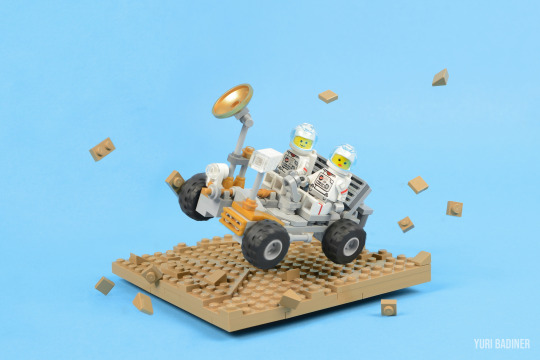
The Apollo LRV
My MOC Lunar Rover, inspired by the real-life “The Apollo Lunar Roving Vehicle”. This is an electric vehicle designed to operate in low lunar gravity. Yes, some people had a chance to drive electric cars long before it became mainstream.
Four lunar rovers were built by Boeing in the early 70’s, one each for Apollos 15, 16, and 17, and one that was used for spare parts after the cancellation of further Apollo missions.
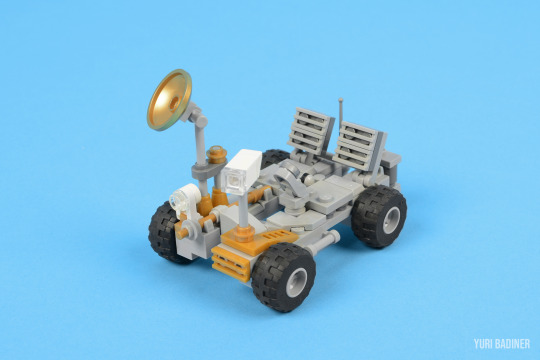



The Lunar Roving Vehicle had a mass of 210 kg and was designed to hold a payload of an additional 490 kg on the lunar surface. A large mesh dish antenna was mounted on a mast on the front center of the rover. Power was provided by two 36-volt silver-zinc potassium hydroxide non-rechargeable batteries with a capacity of 121 amp-hr.
Harrison Schmitt of Apollo 17 said, "....the Lunar Rover proved to be the reliable, safe and flexible lunar exploration vehicle we expected it to be. Without it, the major scientific discoveries would not have been possible; and our current understanding of lunar evolution would not have been possible."

I never got around to taking any kind of artistic photo of this rover (apart from the title photo); it still lies in a container called “Maybe later.”
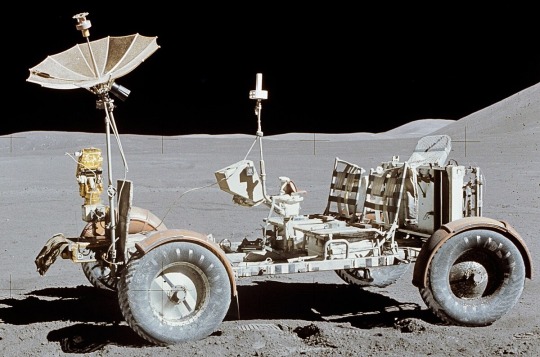
44 notes
·
View notes
Text

(12/19/1972) A water-level view of the Apollo 17 Command Module (CM) floating in the Pacific Ocean following splashdown and prior to recovery. The prime recovery ship, the U.S. Navy aircraft carrier USS Ticonderoga (CVS-14), is in the background. When this picture was taken, the three-man crew of astronauts Eugene A. Cernan, Ronald E. Evans and Harrison H. Schmitt, had already been picked up by helicopter and flown to the deck of the recovery ship. The spacecraft was later hoisted aboard the USS Ticonderoga. A United States Navy UDT swimmer stands on the flotation collar. Apollo 17 splashdown occurred at 13:24:59 (CST), 19 December 1972, about 350 nautical miles southeast of Samoa.
Nasa Image
22 notes
·
View notes
Note
So if "mansplaning" is when a man explains a woman's area of expertise to her as if he's the authority and she isn't, what would you call it when a woman explains a man's area of expertise to him like she knows more than he does? Because that happened to me today.
about to sign out for the night saw this, there's a word that's been used not by me.
very similar to mansplaining but remove man and insert a offensive word that starts with "c"
Or you could just be normal and accept that sometimes people are telling you things you already know for a variety of reasons that you may not be aware of.
Guys explaining Deadpool while in like for the movie to one of the women that wrote a bunch of the comics (I think it was) for example, she understood that the dudes were excited and wanted to share. Also she knows that as a comic author her face isn't likely out there too much so it was dudes just jazzed to talk about the character to someone they had no idea knew more than they could hope to know.
Conversely if they had known and they went in in a condescending fashion, she would be within her rights to be a massive bitch right back at them.
So ya, try to go with a proper perspective before making a judgement.
If I'm walking around the Saturn V building at Kennedy Space center and start talking about how all that stuff worked only to find out that I was talking to Harrison Schmitt one of the last men to walk on the moon, I'd feel foolish but I imagine he wouldn't be upset since have you ever heard of him or would you know what he looked like.
I'd like to think that courtesy could be extended to lots of people to save a lot of butthurt
24 notes
·
View notes
Text

7 December 1972. Earth as seen by Apollo 17 astronauts Eugene A. Cernan, commander; Ronald E. Evans, command module pilot; and scientist Harrison H. Schmitt, lunar module pilot, traveling toward the moon. From the Mediterranean Sea area to the Antarctica South polar ice cap.
@ron_eisele via X
13 notes
·
View notes